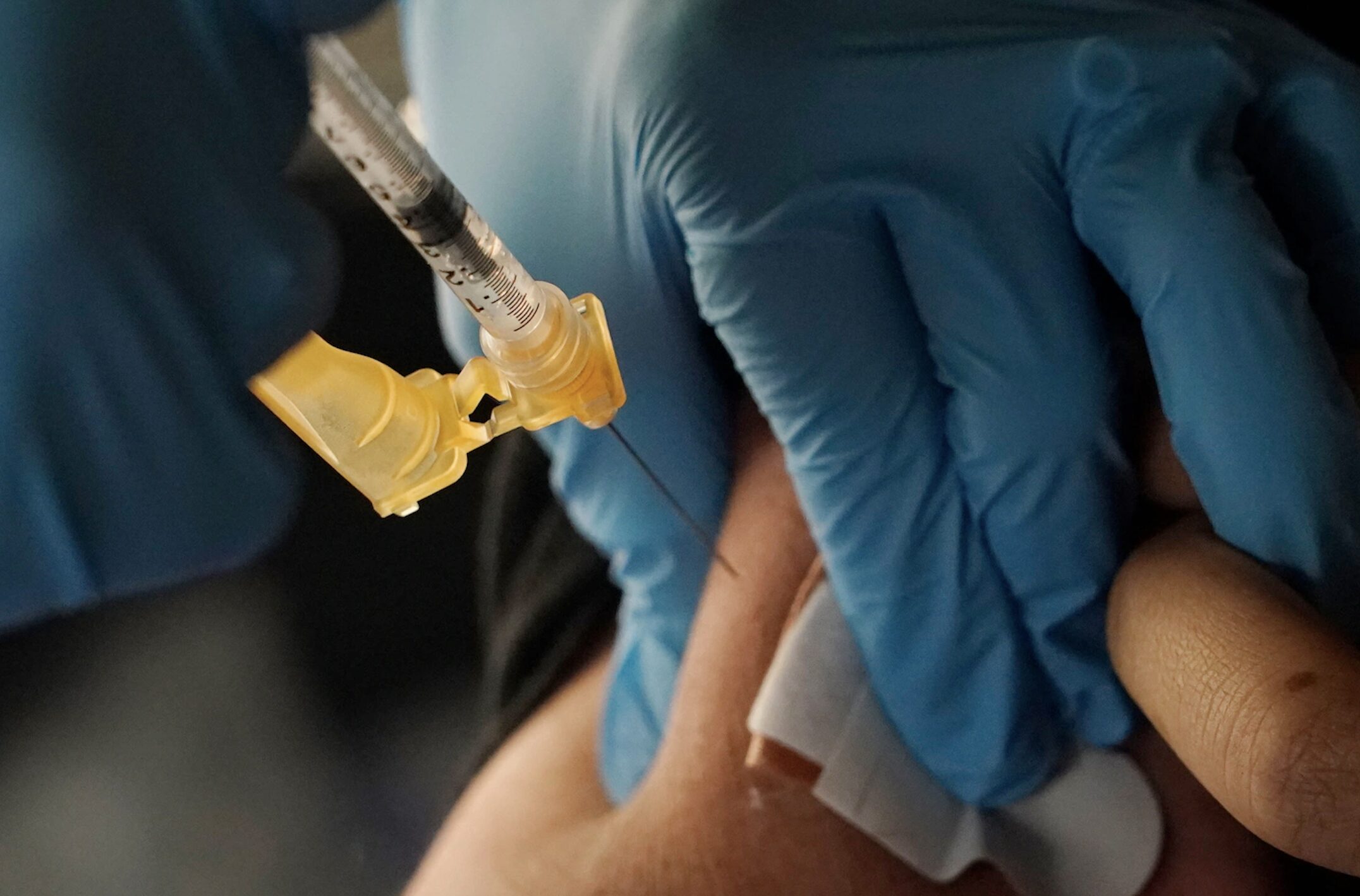
Edward Fishman: The Collapse of the Oil Empire?
EPISODE SUMMARY Podcast host Alex Gabuev is joined by Edward Fishman, a senior research scholar at the Center on Global Energy Policy at Columbia University,…
Thought Leader: Edward Fishman
See source for video.
JOHN DICKERSON: We go now to former FDA commissioner Dr. Scott Gottlieb, who is also on the board of Pfizer. Good morning, Dr. Gottlieb.
DOCTOR SCOTT GOTTLIEB: Good morning.
JOHN DICKERSON: Let’s start with this Delta variant. The- Great Britain has a better handle because they’ve had to face more of it. It kind of looks like what things might be like in the United States after a little while. What have we learned from the U.K. about the Delta variant and what might that tell us about its actions here?
DR. GOTTLIEB: Yeah, I think we’re probably about a month or two behind the U.K. in terms of their experience with the variant. They’re seeing cases grow. They’re certainly not taking off with the same velocity that we’ve seen in past epidemics. And the other thing that we’re observing about the U.K. experience right now is it’s not having the same impact. So they’ve had about 90,000 cases, they’ve had about a thousand hospitalizations. The vast majority are in people who are unvaccinated. Only 8% of people who have been fully vaccinated are among the hospitalized patients. And so you have a situation where you have a population that has more immunity, not just through vaccination, but also through prior infection. So it’s not having the same impact in terms of causing severe death and- and disease as it was during the last epidemic. So even the case fatality rate is down substantially. It’s about 0.1 to 0.3%, depending on how you measure it. The experience in the US is likely to be similar. We have a population that also has a lot of immunity in it through both vaccination and prior infection. But there are social compartments in the U.S., both geographic and social compartments where you have under vaccination and you don’t have a lot of immunity in the populations, particularly rural parts in the South, particularly. You’re seeing what’s happening in Missouri right now where about 60% of the infections are the Delta variant. And so that’s a reflection of the fact that you have parts of the United States where we don’t have a lot of vaccination and we also don’t have a lot of prior infection. And those are going to be the more vulnerable parts of this country.
JOHN DICKERSON: So we had over the course of the last year and a half become used to hearing about spikes. This then what you’re saying is not going to be a spike of the kind we’re used to. But in certain communities, there are these upticks. What do they need to know in those communities?
DR. GOTTLIEB: I think that’s right. It’s not going to be as pervasive. We’re going to see pockets of the country. It’s going to be hyper regionalized where there are certain pockets of the country, we can have very dense outbreaks. And if you remember back in the fall when we had that- that epidemic in the Midwest that really started the national epidemic that occurred in states like Wisconsin. Wisconsin lit up first. If you looked at what was happening there, it was in rural communities where you saw the very dense outbreak and then it started to spread out from there. I think as you look across the United States, if you’re a community that has low vaccination rates and you also think that there was low prior- there’s low immunity from prior infection, so the virus really has in course through the local population, those communities are vulnerable. So I think governors need to be thinking about how they build out health care resources in areas of the country where you still have a lot of vulnerability.
JOHN DICKERSON: We talked to Governor Hutchinson of Arkansas and he was saying that people don’t feel a sense of urgency because of the success of the vaccination and the fact that it’s not on the front page that keeps them from getting vaccinated because they don’t think it’s a big deal. Would you just kind of outline the benefits of vaccination and the dangers of not getting vaccinated that go beyond just the health of the individual who may make that personal choice for themselves?
DR. GOTTLIEB: Right, well, there’s certainly the benefits of vaccination in terms of just avoiding disease, and we know that this can be a severe disease. We also know that there’s more long-term sequelae from having COVID. There’s more long-term consequences. There was a study out of Norway just recently that looked at people who recovered from COVID, and it found that at six months, about 60% of people reported persistent symptoms. Thirty seven percent reported problems with fatigue, 24% reported problems with memory. And what was startling about this study is it also showed that in younger populations and people 16 to 30 years old, about 50% also reported persistent symptoms. And in fact, the loss of taste and smell was most persistent in the younger population. So COVID isn’t just an immediate illness, it’s having sustained consequences. And then there’s also the benefit to the community. If you’re someone who’s younger and healthier and you’re not at risk from COVID it from a bad outcome from COVID, you feel like you’re more impervious to the disease, there’s nonetheless a lot of consequences to you being a chain and transmission, spreading the disease to others. If you get vaccinated, we know you’re substantially less likely to spread the disease to those around you. So if you have young children at home or you’re interacting with older individuals, you may not get all the benefits from vaccination or people who are immunocompromised. If you vaccinate yourself, you’re far less likely to become asymptomatic or mildly symptomatic from the infection and go on to infect others. So there is that community aspect to getting vaccinated and protecting those you care about who are around you.
JOHN DICKERSON: In our previous discussions, you’ve talked about having to change the way in which vaccines are delivered, that officials have to come up with more clever and interesting ways. I wonder in that context, what do you think of the- the New York effort the mayor there is going to have at-home vaccinations? Do you think that- does that make some sense? And might that be a way to pierce some of this hesitancy?
DR. GOTTLIEB: Yeah, I think it’s exactly what we need to be doing. We need to be thinking about more bespoke ways to deliver the vaccine. We also need to move away from sort of a top-down national campaign to get people vaccinated and make more of a grassroots campaign, empower local leaders, local physicians to try to help reach out into the communities to get people vaccinated. People who are going to be convinced to get vaccinated by Tony Fauci or the surgeon general or me, for that matter, probably are already vaccinated. And so we need to get the vaccines into the hands of doctors, make it easier for doctors to supply vaccines in their offices. And both companies are trying to come up with formulations that will be easier to deliver in a doctor’s office, including Pfizer, the company I’m on the board of. We need to empower doctors to be vaccinating and supply the resources to do that. There was a study out from the Commonwealth Foundation this week that showed of the people who remain unvaccinated, about 50% said they would be most convinced to become vaccinated from their local physicians, from their doctors. And so that’s what we need to shift to. We need to shift to more of a grassroots, bottom-up campaign and move away from this top-down national campaign. As we enter into the fall, there will be people seeking out vaccination heading into the fall as people contemplate going back to work and back to school. So I’m still optimistic we’ll pick up more of the American population and get them vaccinated. But it’s going to slow down as we get into summer and prevalence declines and people feel safer.
JOHN DICKERSON: We have- we’re going to have to leave it there. Dr Gottlieb, as always, we listen to every word you say, and so we’re grateful for you being here. Thanks so much, Dr. Gottlieb. And we’ll be right back in a moment.
Edward Fishman: The Collapse of the Oil Empire?
EPISODE SUMMARY Podcast host Alex Gabuev is joined by Edward Fishman, a senior research scholar at the Center on Global Energy Policy at Columbia University,…
Thought Leader: Edward Fishman
Leana Wen: How long does covid booster protection last?
More evidence highlighting the benefit, and limitations, of covid-19 vaccines. After the Centers for Disease Control and Prevention shifted its coronavirus vaccine guidance from a…
Thought Leader: Leana Wen
Dr. Sanjay Gupta: How Wearable Tech Transforms Health
We’ve come a long way in integrating technology into our daily lives, but could wearable tech actually help you live longer? From detecting heartbeat irregularities to flagging signs of…
Thought Leader: Sanjay Gupta

